Hemerocallis fulva – Common Daylily
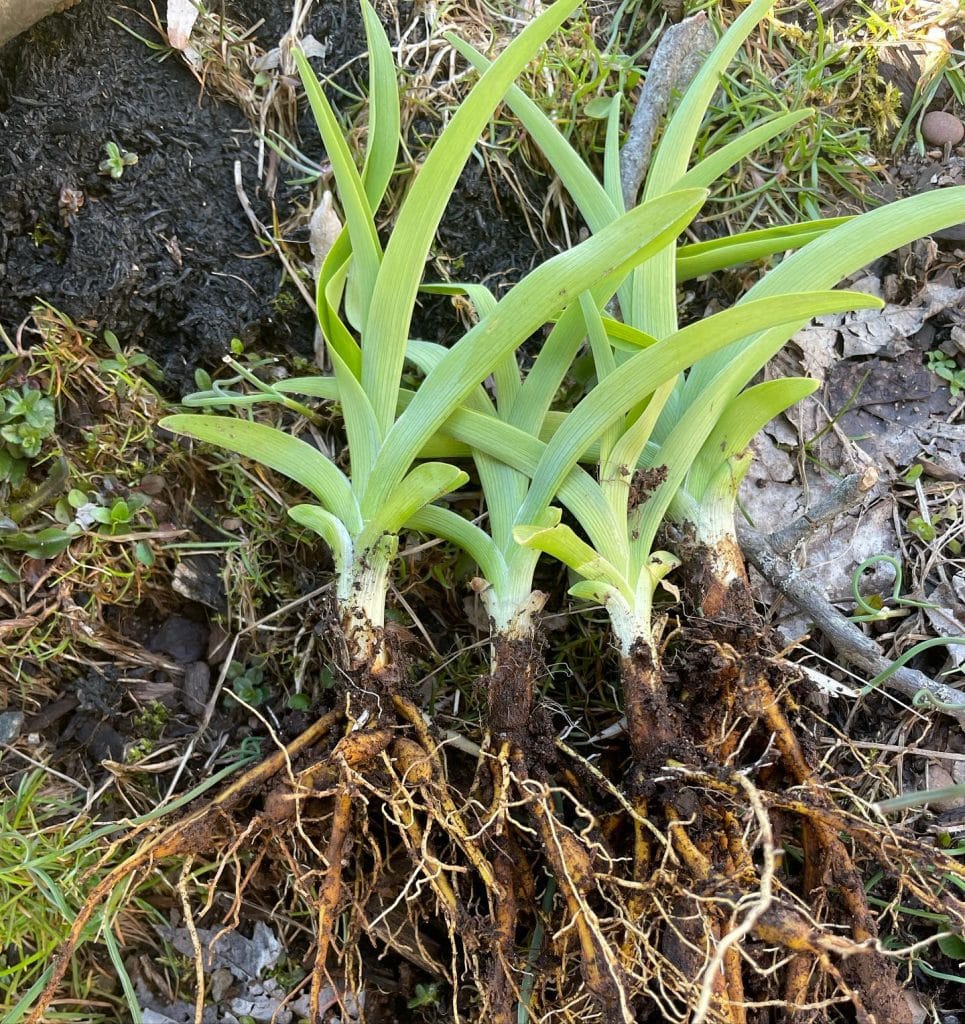
Common Daylily (Hemerocallis fulva) is a perennial plant that was brought here from Asia as a garden ornamental. It has since escaped cultivation and is now considered invasive in many states. Common daylilies can be found in fields and roadsides. They have the ability to form dense colonies, displacing native plants. The plant reproduces by […]
Cirsium vulgare – Bull Thistle
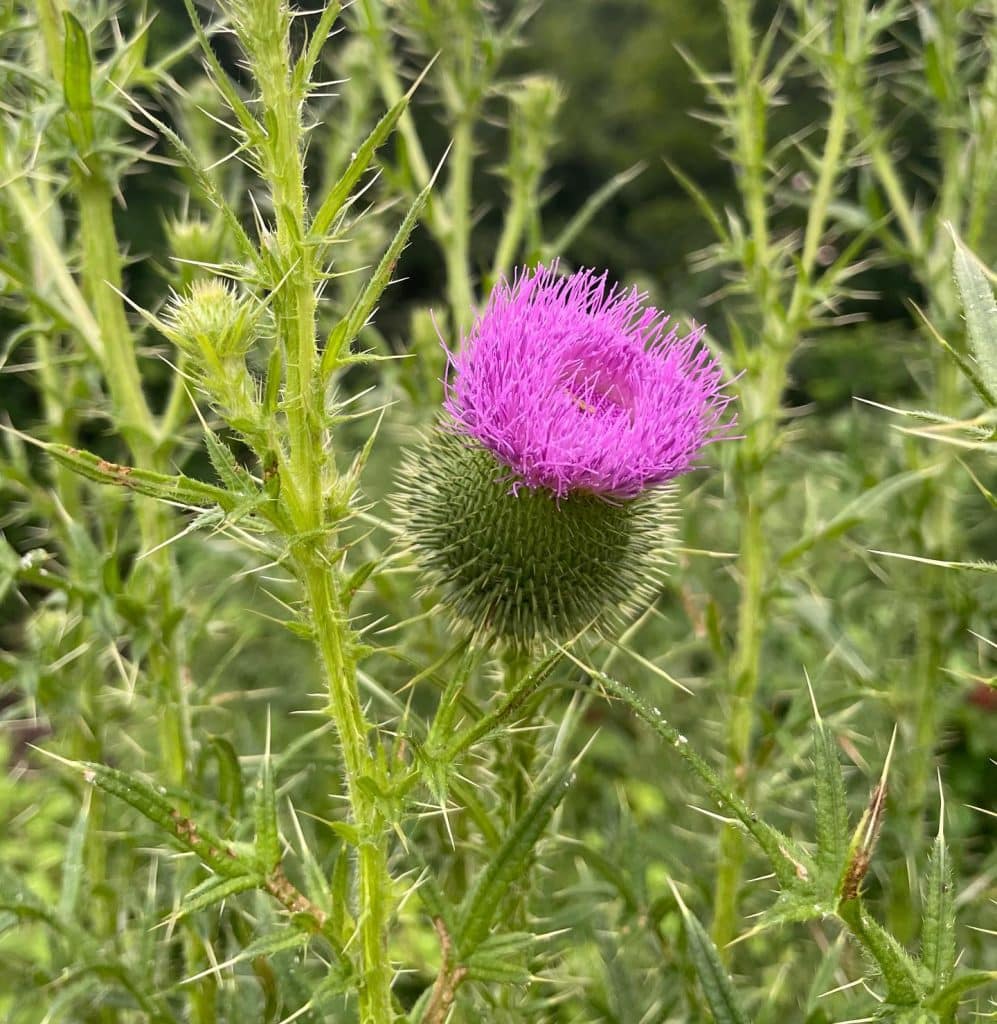
Bull Thistle (Cirsium vulgare) is an edible plant that is native to Eurasia. Bull thistle has become naturalized in North America and is now considered invasive in some areas. There are over 200 species of thistle in North America, 60 of which are native. Thistles are related to globe artichoke. They can be found in […]
Auricularia nigricans – Ear fungus

Ear fungus (Auricularia nigricans) is a wood-rotting mushroom that can be found growing singly or in clusters on dead or dying trees. The ear fungus (A. nigricans) can be differentiated from other wood ear fungi (mushrooms in the Auricularia genus) by its upper surface which is ash-gray to yellowish brown and hairy. Wood ear mushrooms […]
Rosa multiflora – Multiflora Rose
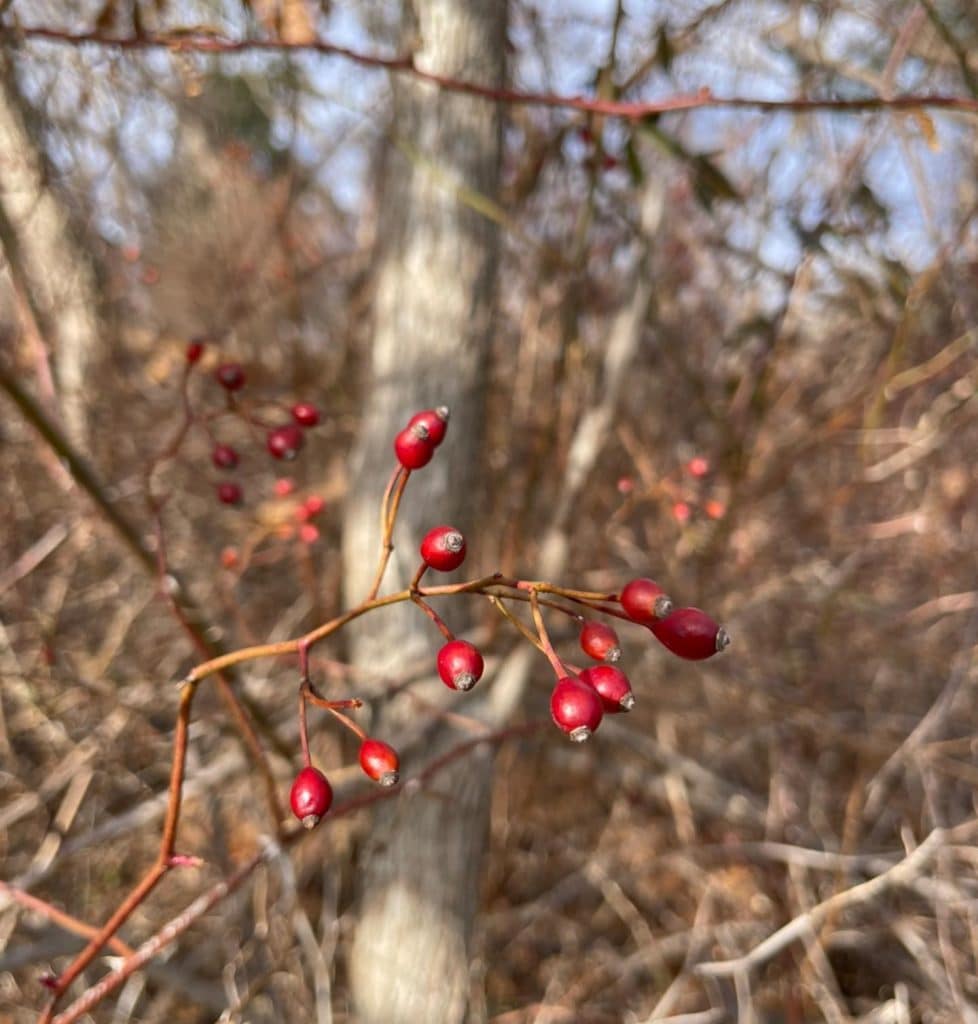
Multiflora rose (Rosa multiflora) is an extremely prolific invasive that can form dense thickets, crowding out native plants. Multiflora rose is found in open woodlands, forest edges, fields, and margins of marshes. All roses have edible leaves and fruits (hips). Roses have compound leaves with an odd number of leaflets. The thorns are long and […]
Taraxacum officinale – Dandelion
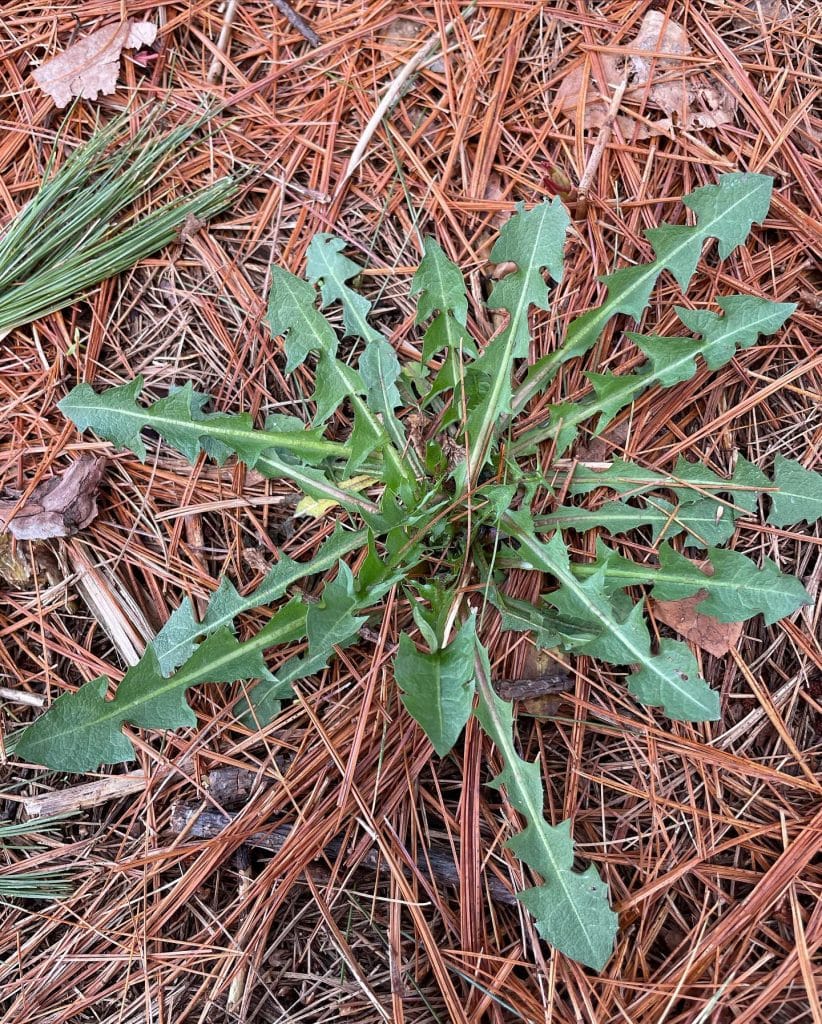
Dandelion (Taraxacum officinale) is a non-native plant from Europe that is edible and medicinal from root to flower. Dandelions can be found in lawns, parks, meadows, and disturbed areas. They can tolerate a wide range of conditions and grow in every U.S. state. Dandelions form a basal rosette of leaves in early spring. The […]
Asarum canadense – Wild Ginger
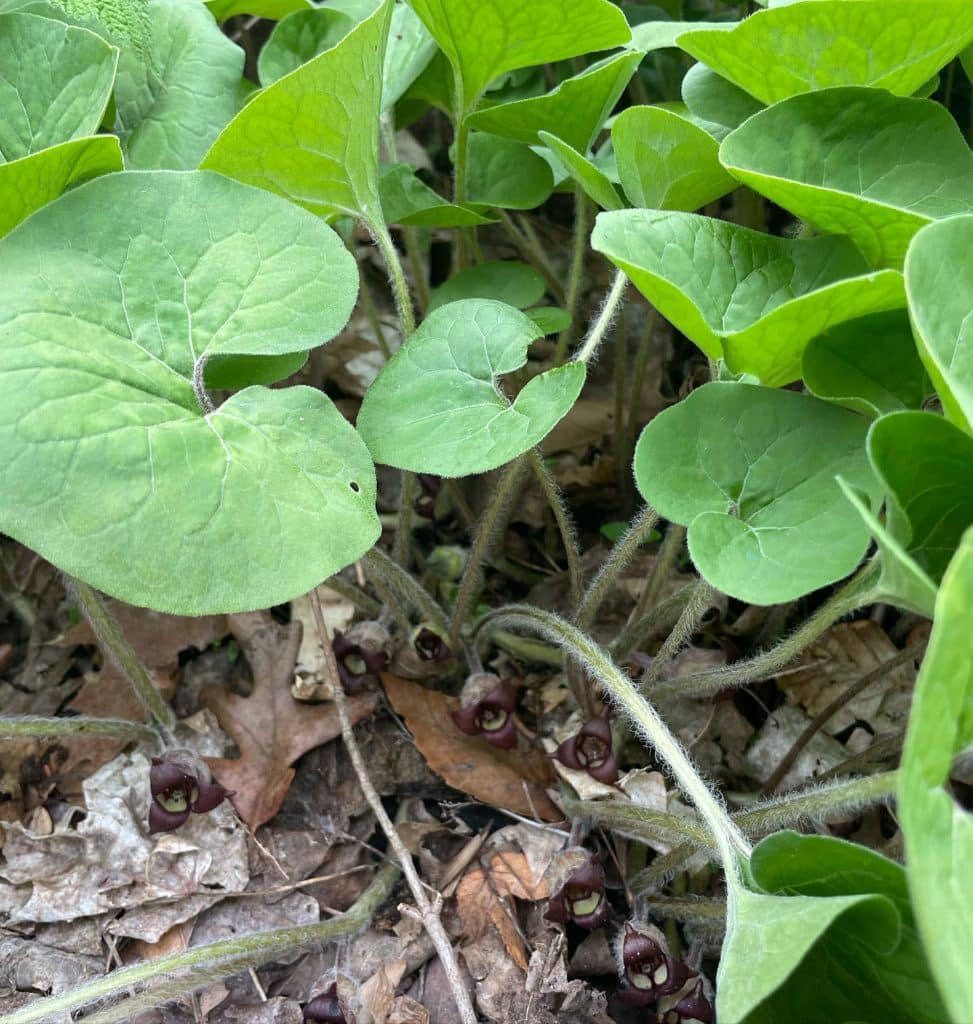
Wild ginger (Asarum canadense) is a native perennial that can be found in moist woodlands. Wild ginger often forms dense colonies by rhizome. It can be found at the base of rocky slopes and along rivers. It prefers partial to full shade. Wild ginger has heart-shaped leaves that are usually in pairs. It produces […]
Allium canadense – Wild Onion

Allium canadense (Wild onion) is an edible native perennial. Wild onion, also known as “meadow garlic”, can be found in meadows, fields, forests, and lawns. It has solid leaves and grows from a bulb. Each flowering plant will have three leaves. The flowers bloom in late spring to summer and are white or pink. The […]
Barbarea vulgaris – Wintercress
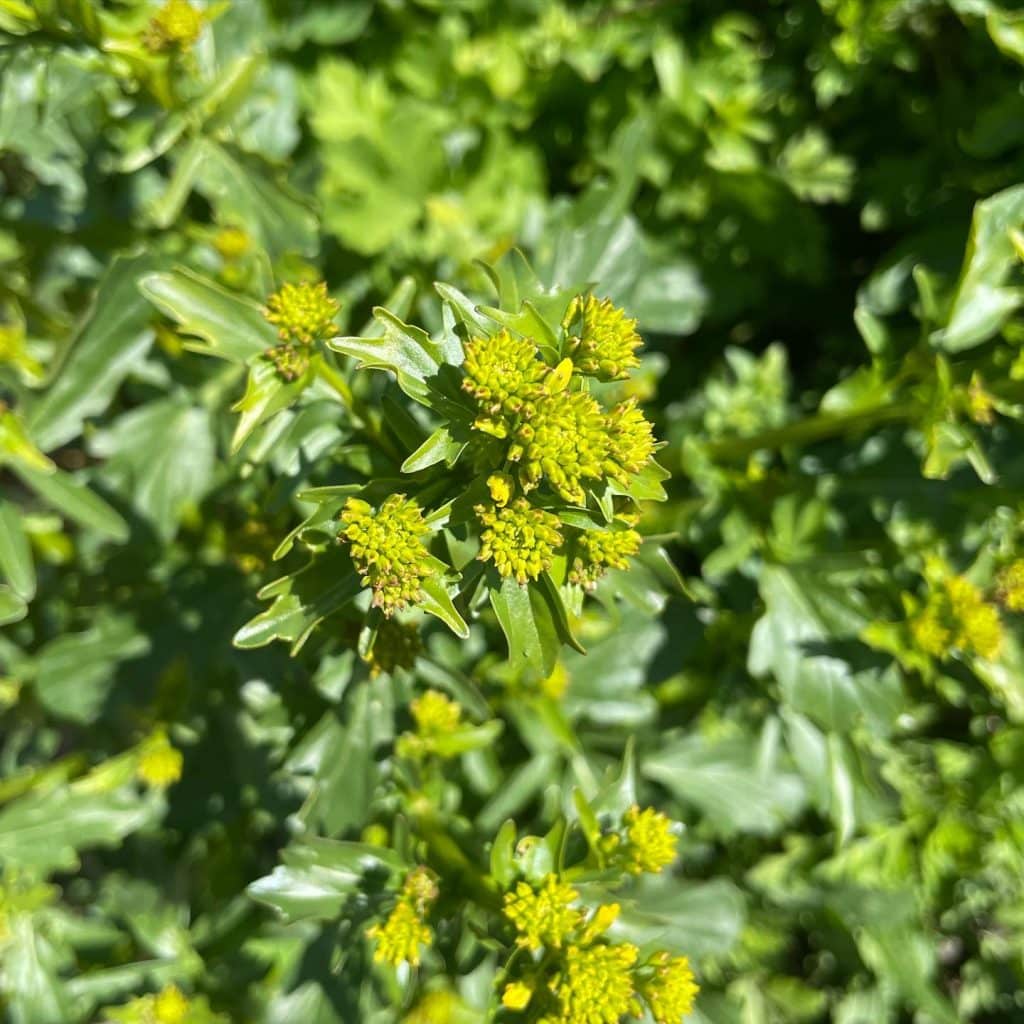
Wintercress (Barbarea vulgaris) is a non-native plant in the mustard family. Wintercress, also known as Yellow Rocket, can be found in fields, gardens, and disturbed soil in full sun. Wintercress produces a basal rosette of deeply lobed emerald green leaves. The leaves resemble arugula with larger, rounder lobes. The plant produces a hairless flower stem […]
Stellaria media – Chickweed
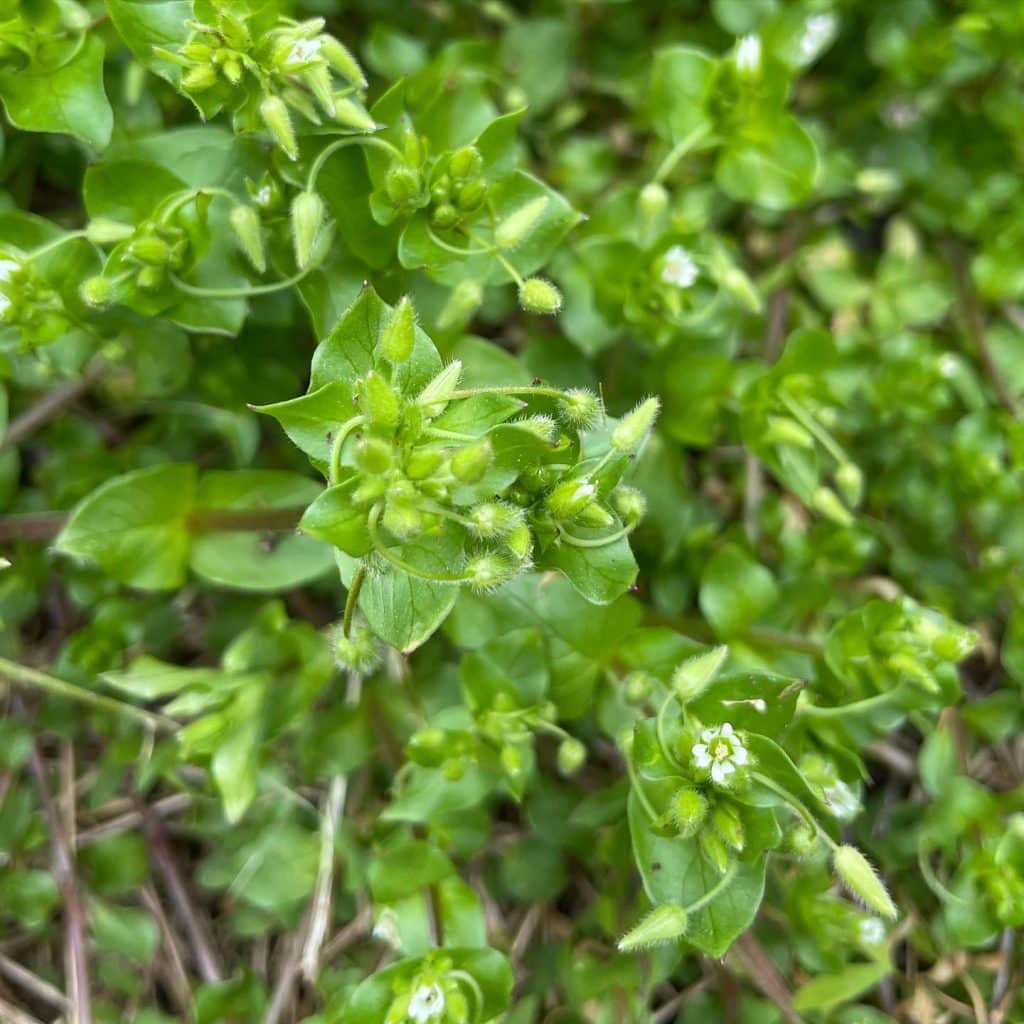
Chickweed (Stellaria media) is a common edible green that was brought here from Europe. Chickweed can be identified by its teardrop-shaped leaves that grow opposite each other. It has a single line of hairs growing along its stem and white flowers with five petals (appears to be 10 petals due to its deep clefts). Chickweed […]
Nepeta cataria – Catnip
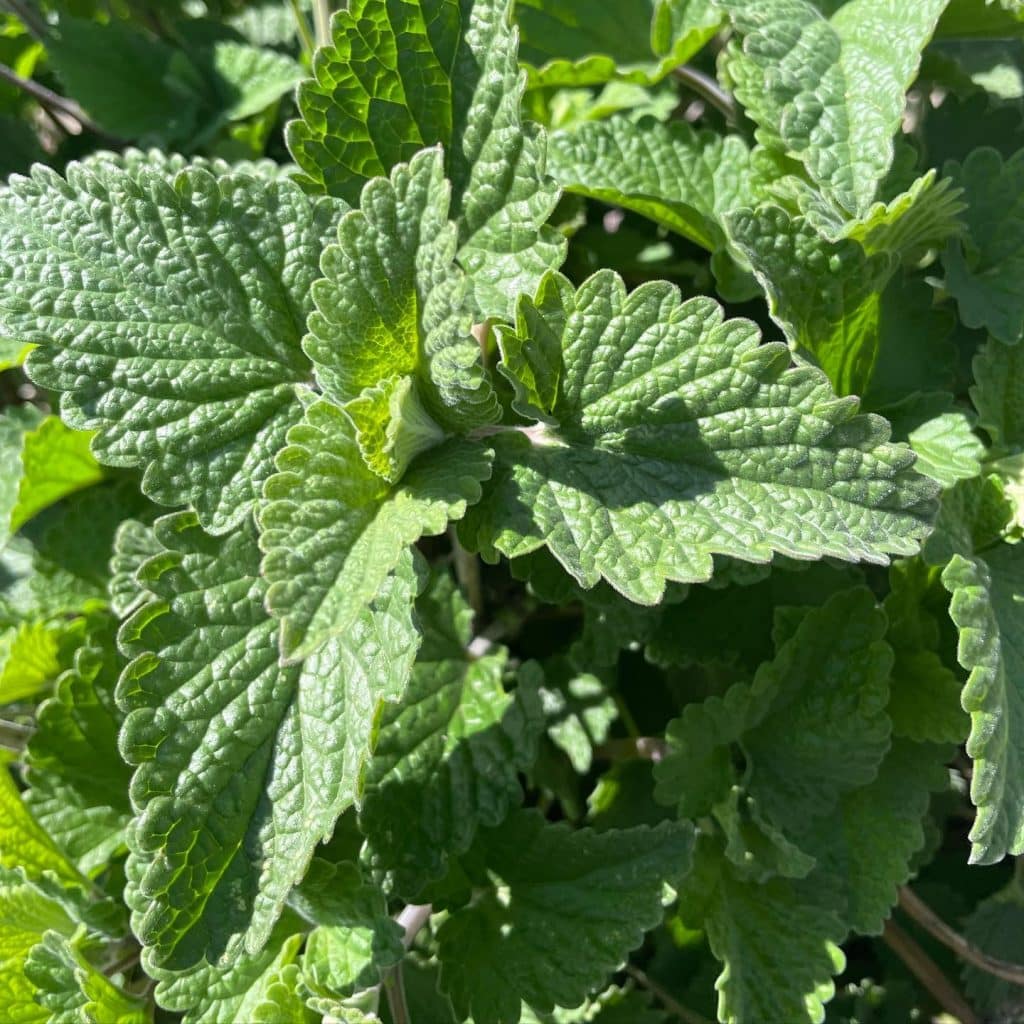
Catnip (Nepeta cataria) is a non-native plant in the mint family that can be found wild in New England. Catnip, as with all plants in the mint family, has a square stem and opposite leaves. Catnip can be identified by its heart-shaped and velvety leaves. The plant has a skunky smell that 2/3 of cats […]
Glechoma hederacea – Ground Ivy
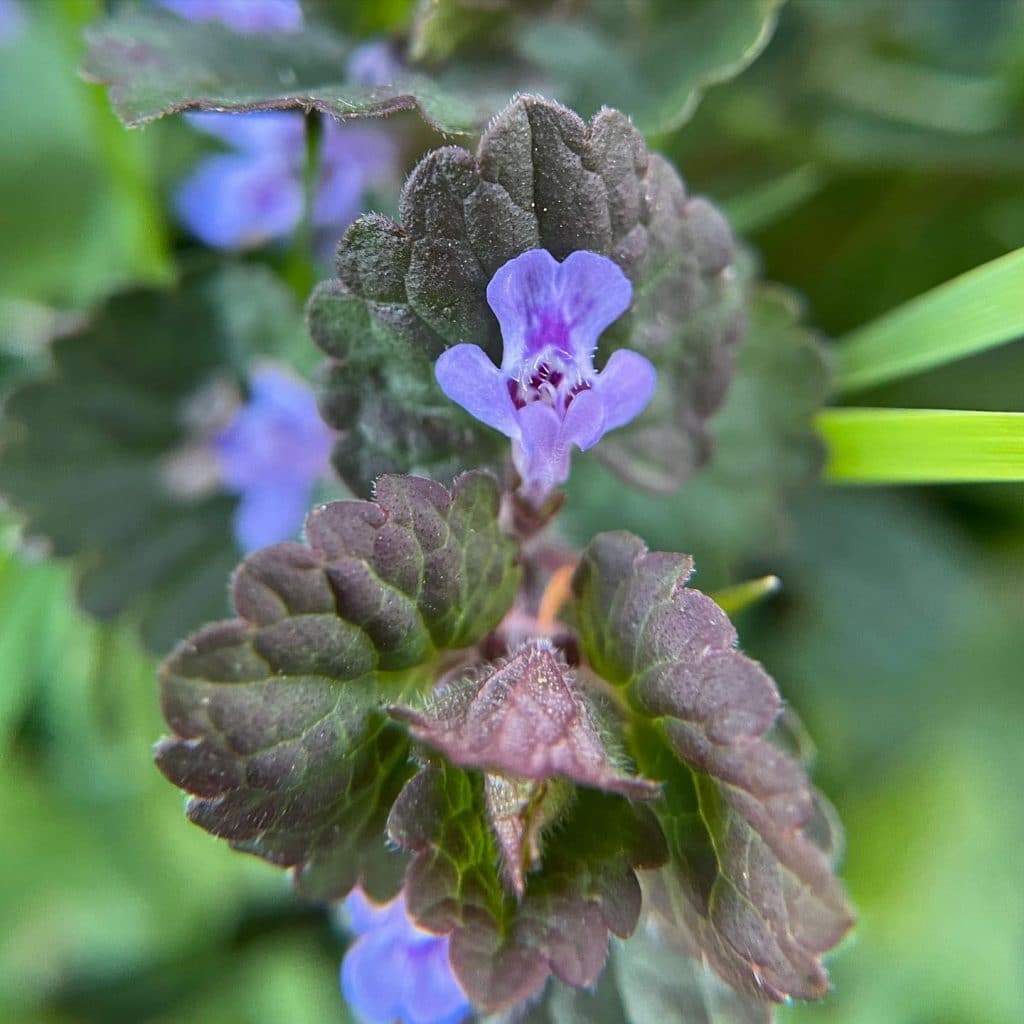
Ground ivy (Glechoma hederacea) is a common, non-native weed in the mint family. It can be found around the world. Ground ivy, also known as creeping Charlie and ale hoof, can be found in lawns, fields, and woodland edges. It prefers moist, fertile soil. Ground ivy spreads by runners and seeds. It often creates dense […]
Picea abies – Norway Spruce
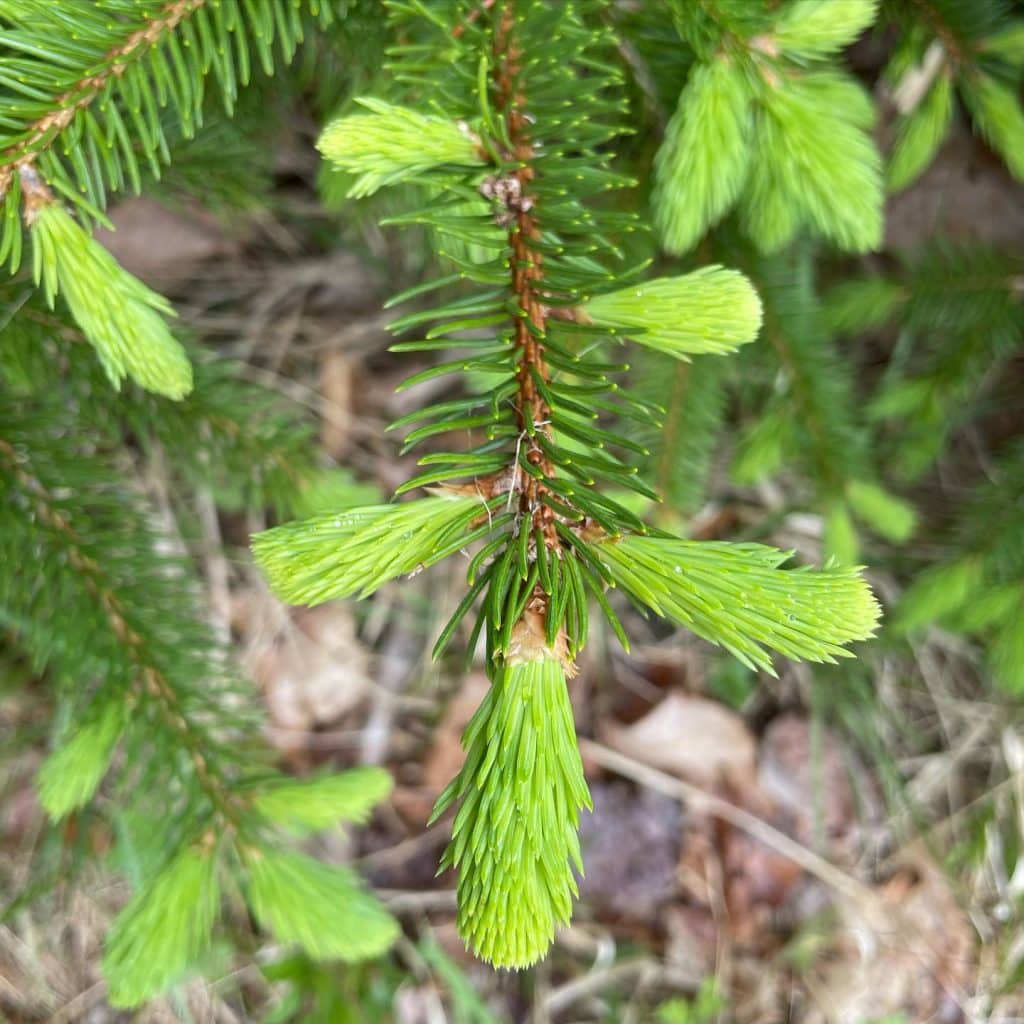
Norway Spruce (Picea abies) is a common spruce tree that came from Europe. Spruce trees have needles that have 4 sides. The needles of spruces are individually attached to the stem, unlike pine needles which are grouped in fascicles. All spruces produce edible tips. The flavor of spruce tips varies by species from being citrusy […]
Tsuga canadensis – Eastern Hemlock
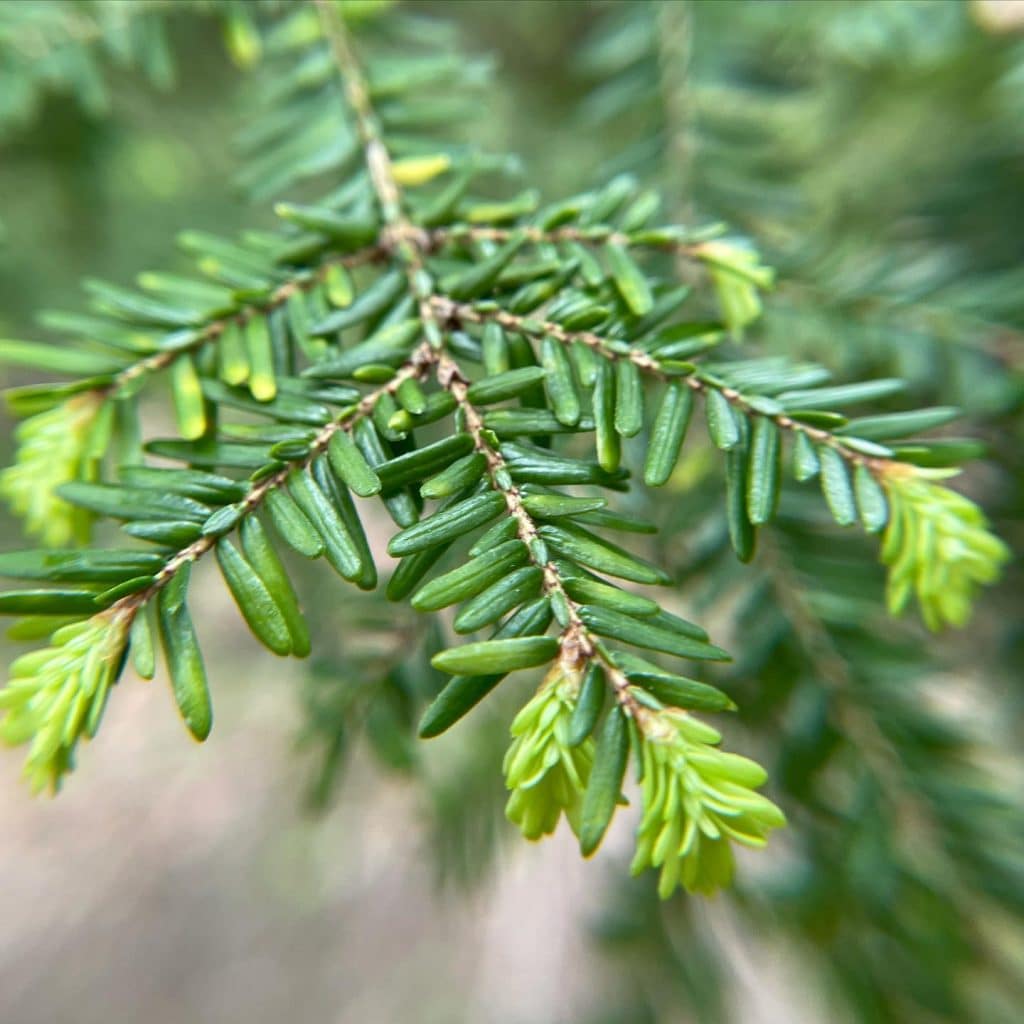
Eastern Hemlock Trees (Tsuga canadensis) are native, common forest trees. Eastern Hemlocks can be identified by their 1/2 inch long, flat needles that have white stripes on their underside. The stems also have miniature, often upside down needles that line the top of the branches. The cones are 3/4 inch long. The trees can grow […]
Persicaria longiseta – Oriental Lady’s Thumb
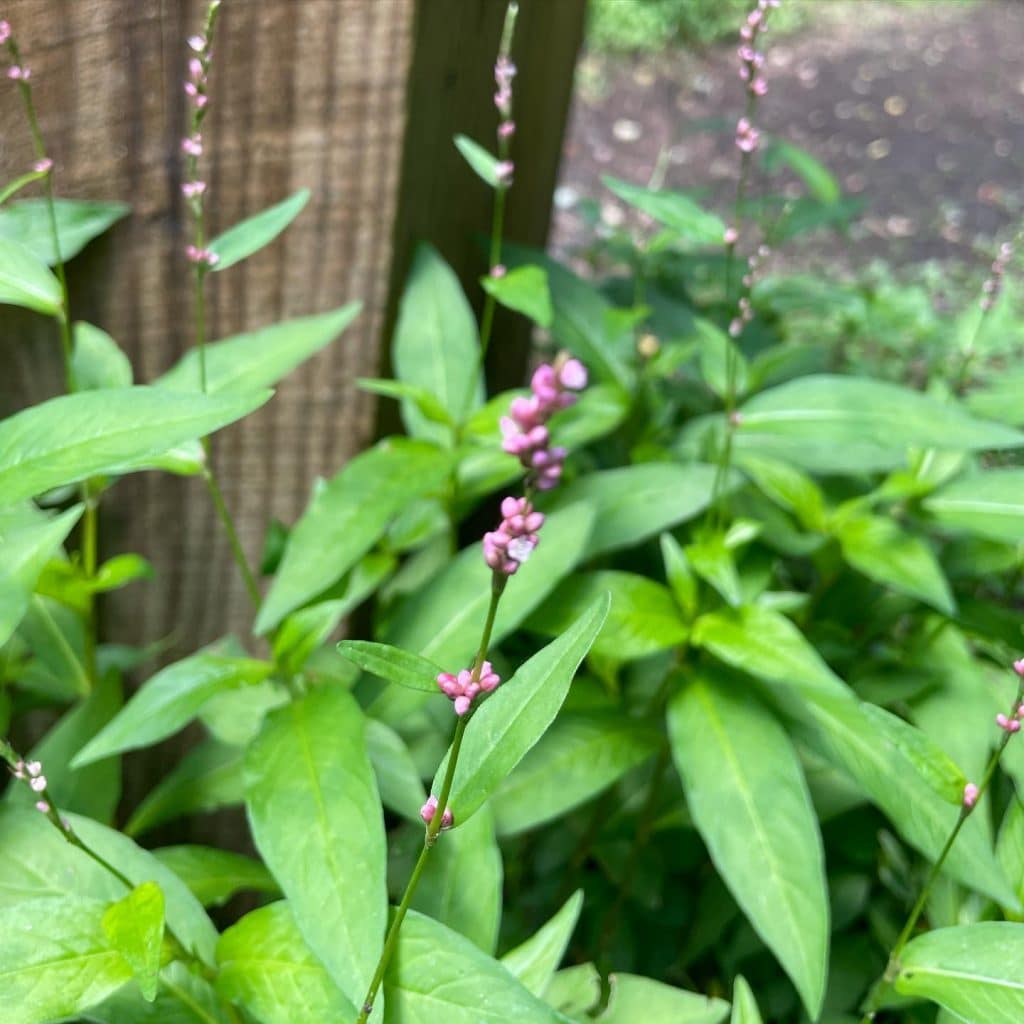
Oriental Lady’s Thumb (Persicaria longiseta) is an edible, non-native plant from Asia. It can be identified by its alternate leaves and small pink flowers. All above ground parts of oriental lady’s thumb are edible raw or cooked. It has a peppery taste. Oriental lady’s thumb might be confused with lady’s thumb (Persicaria maculosa) which has […]
Leucanthemum vulgare – Oxeye Daisy
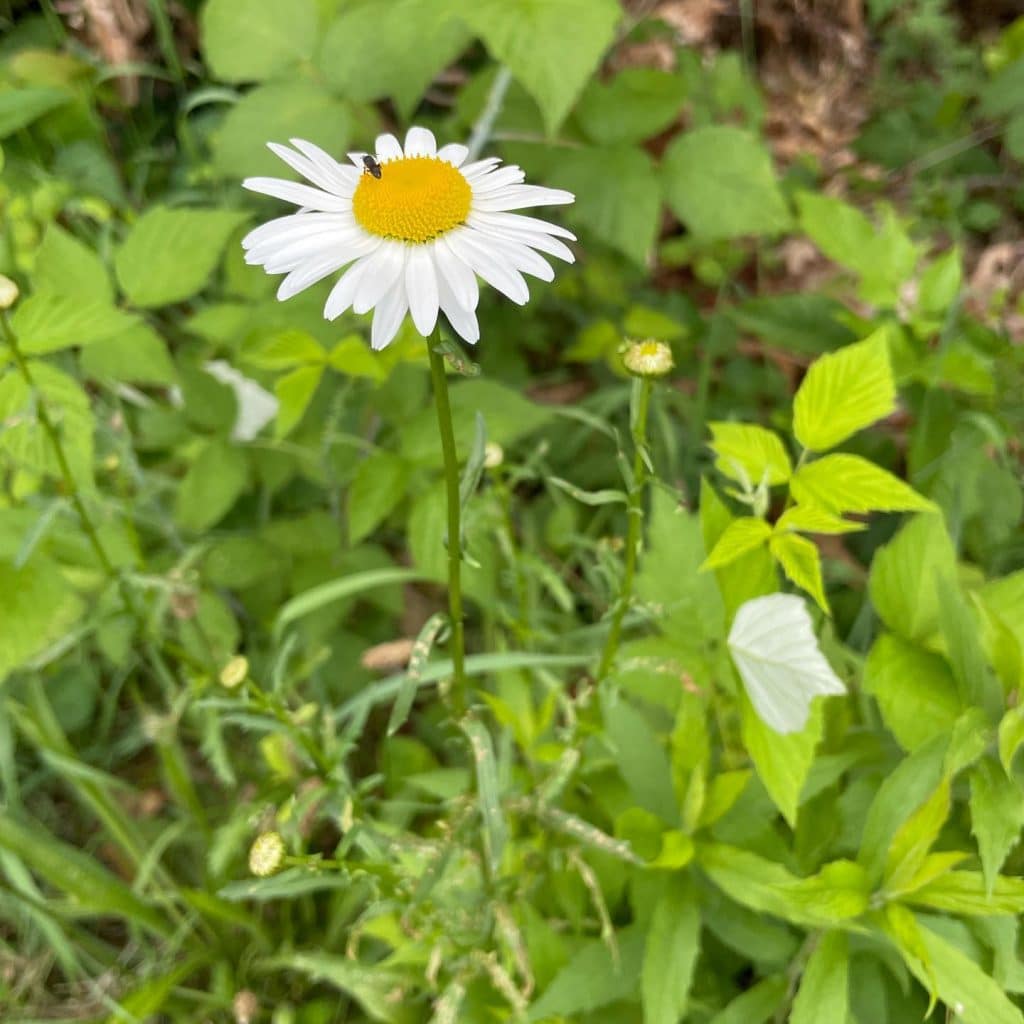
Ox-eye daisy (Leucanthemum vulgare) is a non-native, edible perennial with a unique flavor. Ox-eye daisies have the ability to spread prolifically via shallow rhizomes. They have been listed as a noxious weed in some states. Ox-eye daisy can be found in meadows and roadsides. It prefers growing in direct sunlight. Ox-eye daisy has lobed and […]
Aegopodium podagraria – Ground Elder
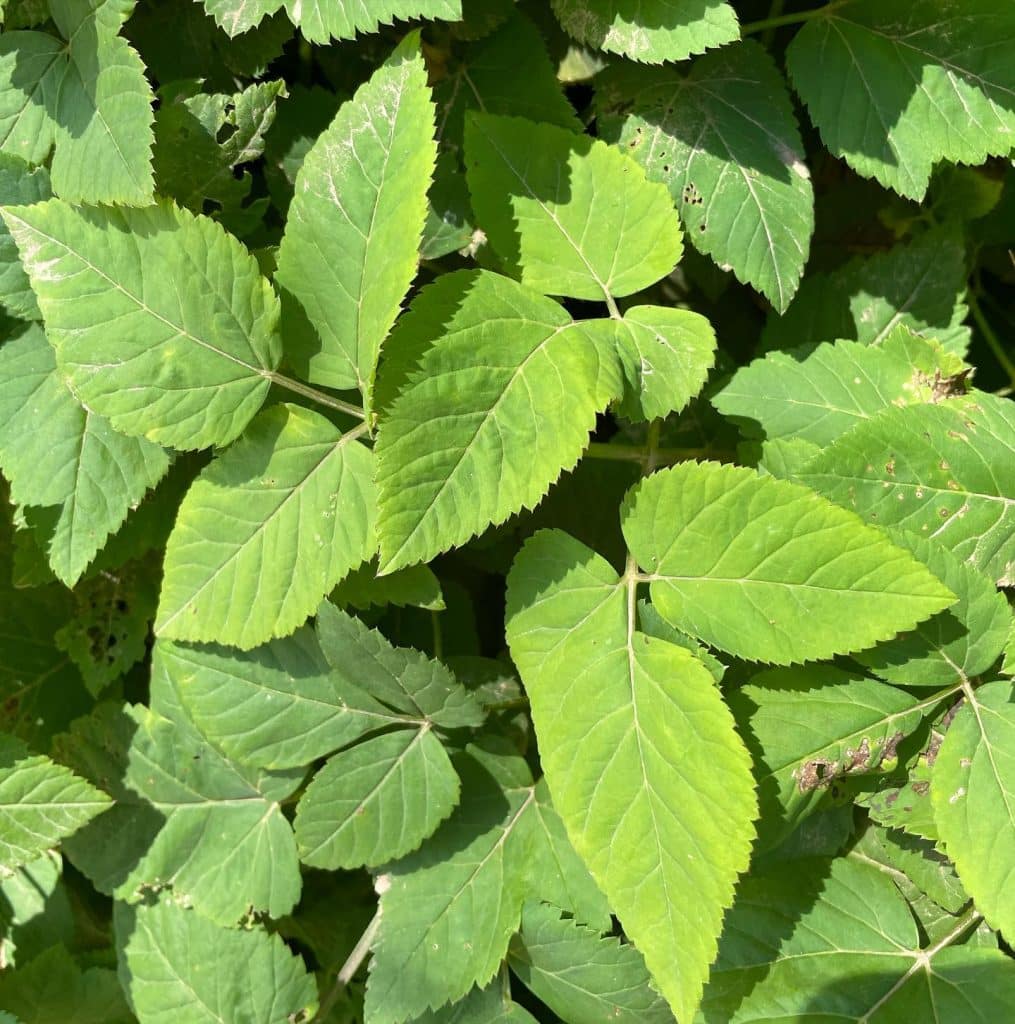
Ground Elder (Aegopodium podagraria) is an edible, invasive plant in the carrot family. Ground elder can be identified by its toothed, hairless leaves in groups of three. The plant grows less than a foot tall. The stalks are grooved and hairless, unlike Wild Carrot. In May-June, the plant sends up a flower stalk that grows […]
Leonurus cardiaca – Common Motherwort
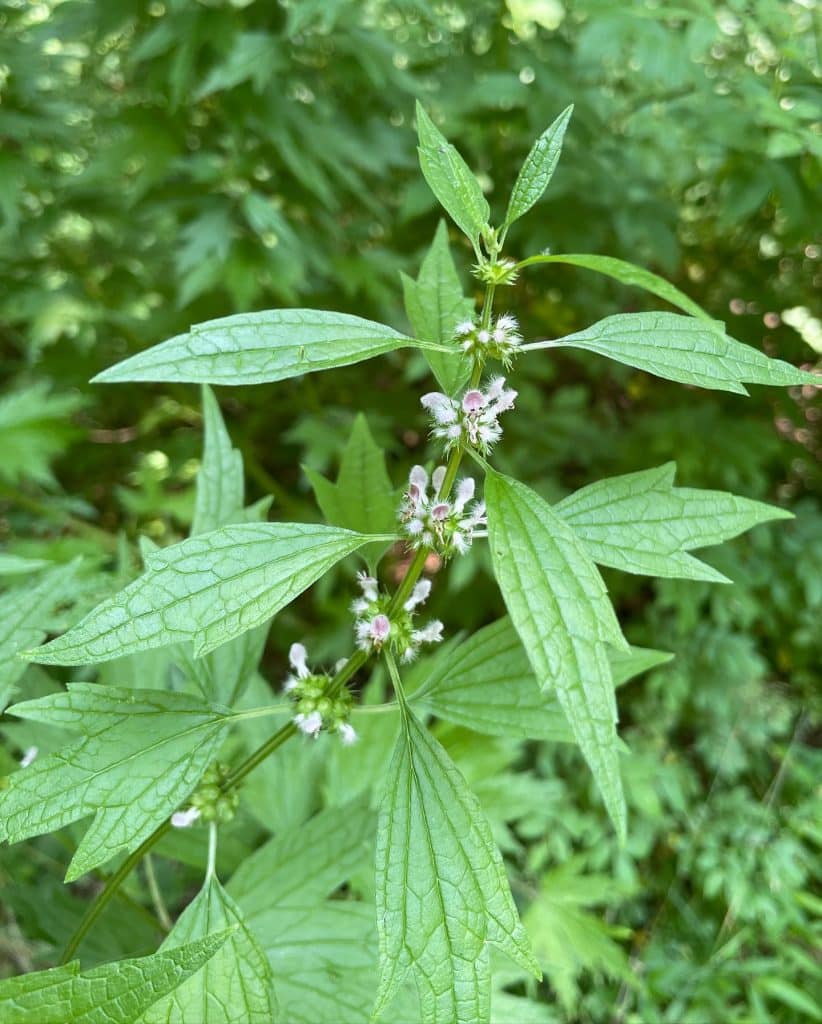
Common Motherwort (Leonurus cardiaca) is a non-native, medicinal plant in the mint family. Motherwort has pink tubular flowers, upper leaves lobed in three parts, and lower leaves that resemble maple leaves. The plant is bitter so does not taste or smell good, but it has been used medicinally to regulate menstrual periods, calm anxiety, and […]
Hypericum perforatum – St. John’s Wort
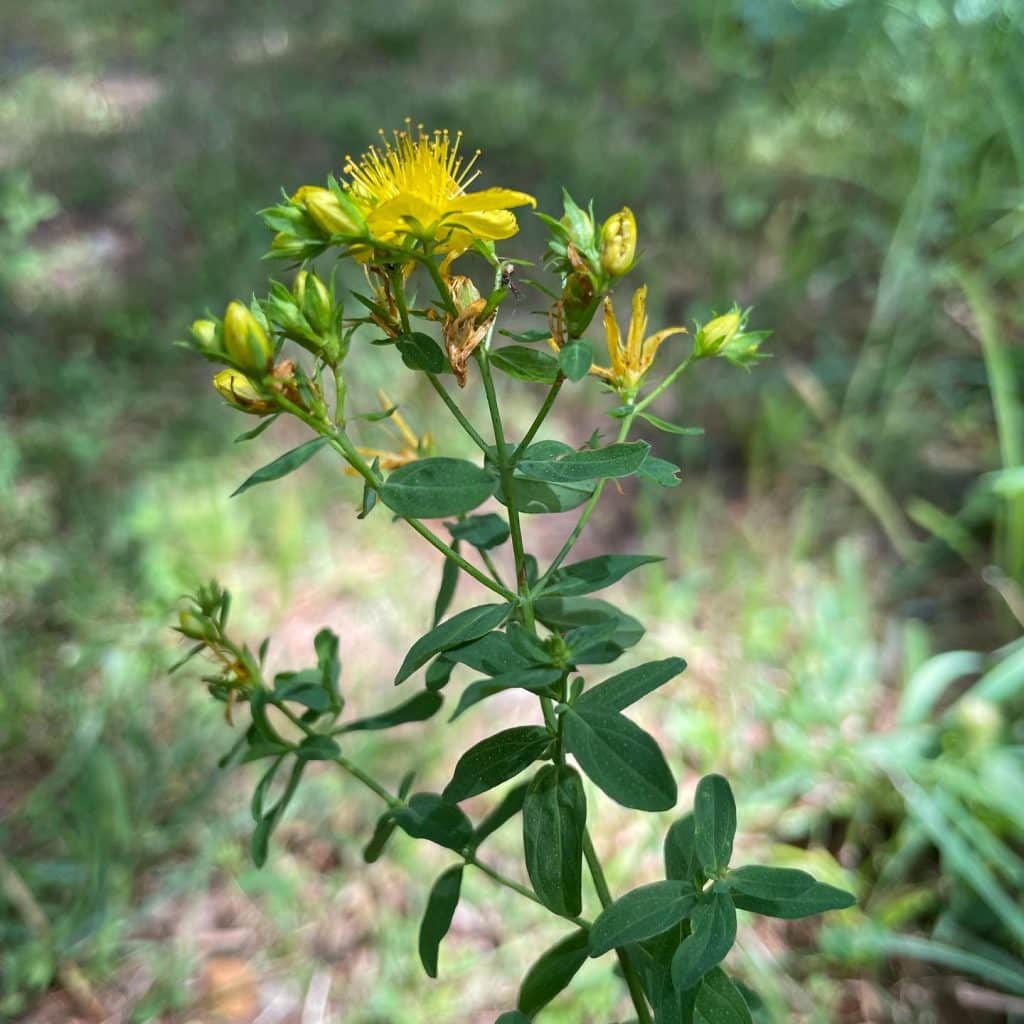
St. John’s Wort (Hypericum perforatum) is a non-native medicinal plant that usually flowers near the summer solstice. It can be found in sunny areas with dry, gravelly soil. St. John’s wort has five-petalled flowers with many stamens and narrow leaves which have tiny transparent dots. The flowers produce a red/purple substance when crushed called hypericin, […]
Filipendula ulmaria – Meadowsweet

Meadowsweet (Filipendula ulmaria) is a non-native edible and medicinal plant in the rose family that flowers in July. Meadowsweet can be identified by its reddish stem and creamy-white flowers with five petals. The flowers have a sweet, almondy scent. The flowers can be used to flavor mead or panna cotta. They can also be added […]
Comptonia peregrina – Sweet Fern

Sweet Fern (Comptonia peregrina) is a native shrub related to the bayberry plant. Sweet fern is not a true fern, as it produces seeds and flowers, unlike ferns which reproduce using spores. Sweet fern leaves have a nice aroma, but are tough, so are best used to flavor liquids. The leaves should then be […]
